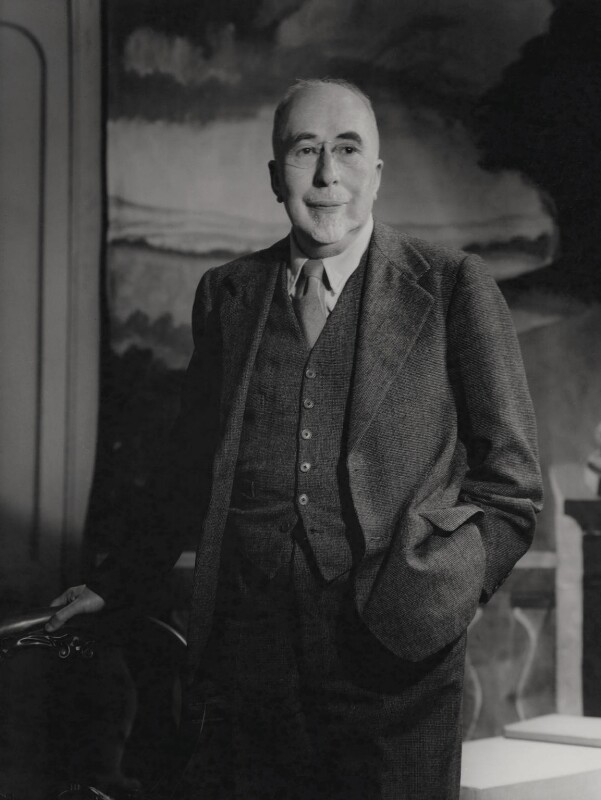Frank Swinnerton

12 Aug 1884 - 6 Nov 1982
Short Fiction
Biography
According to the Oxford Dictionary for National Biography, Frank Swinnerton had a remarkably steady and “normal” childhood for a future renowned writer. Born in 1884 in Wood Green, London, his parents were modest folk from midland England and Scotland; his father, Charles Swinnerton, was a copperplate engraver, and his mother, Rose Cottam, was a designer. Though he began writing at age 10, his educational opportunities were limited by his family’s lack of money and by his own poor health, a condition which resulted in his rejection from the military during World War I. He went to the neighborhood schools, but his formal schooling was sporadic because he suffered from several illnesses as a child. By age 14, Swinnerton left work altogether and began working as an office boy for the Scottish Cyclist. Despite lacking a formal education, Swinnerton’s work connections and extensive personal reading of authors such as Henry James, Henrik Ibsen, and Louisa May Alcott honed his writing and editing skills, and by 1901 he started a new job as clerk-receptionist for J. M. Dent’s publishing firm. While employed there, Swinnerton assisted Hugh Dent in the 1906 launch of Everyman’s Library.
Swinnerton’s early successes in the publishing world helped him forge connections and ultimately grow his abilities as an author. In 1907, he was hired by Chatto & Windus as a proofreader, and they quickly promoted him to read and advise on submitted manuscripts, facilitating his involvement with authors like Aldous Huxley, Lytton Strachey, and, most notably, Arnold Bennett. Swinnerton had already drafted multiple novels by 1909, and through Arnold Bennett’s advocacy, he published his first novel. Swinnerton married Helen Frances Olga Dicks in 1920, but they quickly divorced. He later married Mary Dorothy Bennett on March 15, 1924, while working for Chatto & Windus. They had one child, a daughter named Olivia. Throughout his life, Swinnerton “knew, often intimately, all the leading authors, editors, agents and publishers in London and many in New York and Boston” (Times). These literary connections, combined with the positive reception of his books, encouraged Swinnerton to pursue writing full-time. He resigned from his publishing job in 1926 and spent the latter half of his life in the countryside, specifically Surrey, where he died on November 6, 1982, at age 98. During his lifetime, Swinnerton was a prolific writer and published 42 novels, 15 books on literary topics, and many reviews and articles. While he did not generate large amounts of fame or critical acclaim, he was well-respected for his works.
Despite his close relationship with authors such as H. G. Wells, Swinnerton rarely addressed social and political issues in his own writing. Rather than being motivated by external events, Swinnerton seems to have focused on interpersonal relationships as a major theme in his writing. He was respected for writing “excellent, credible stories about contemporary people, usually living in or near London, [people who were] intelligent and aware of the times they were living in but concerned above all with their relationships as friends, enemies, livers or rivals in love” (Times).
Swinnerton’s biographies do not mention his short stories, so the discovery of these stories in at least two 20th century periodicals sheds light on one aspect of the author’s work that has been largely ignored. It also prompts readers to question how many short stories Swinnerton actually wrote. His publishing connections could very well have facilitated the publication of many stories still undiscovered. Alternatively, Swinnerton may have merely dabbled in the short story genre. His short story “Round the Bandstand,” which can be found in the short-lived periodical The Open Window, makes abundant use of free indirect discourse to show a simple, lighthearted scene of single young men and women flirting and socializing around a bandstand in a London park. The perspective is from a young lady who has been recently slighted by her beau and desperately wants to catch the eye of a handsome young man, who gets distracted on his stroll through the park by two other young women. Swinnerton’s choice of narrative style allows for a hilarious scene that is both absurd and relatable, exploring the fickle and frenzied thoughts of a young person in a social environment that many readers will recognize and understand. Swinnerton's other short story “A Day in Potter’s Life” follows an awkward, rather depressed young fellow on a blind date with a girl he just so happened to watch on a train earlier that day. The foreignness of romance and social connection significantly affects the main character. Both of these stories, much like Swinnerton’s life, are simple yet profound, portraying the ins and outs of life for the average middle class young person.
Further Reading
"Frank Swinnerton - Biography" Great Authors of World Literature, Critical Edition. Ed. Frank Northen Magill. eNotes, 1997, www.enotes.com/topics/frank-swinnerton#biography-biography. Accessed 14 Feb. 2018.
"Mr Frank Swinnerton." Times [London, England] 10 Nov. 1982: 14. The Times Digital Archive. Web. 8 Feb. 2019.
"Swinnerton, Frank Arthur (1884–1982), writer and publisher's reader." Oxford Dictionary of National Biography. September 23, 2004. Oxford University Press, Web. 9 Feb. 2019.
Contributors
- Isaac Robertson
- Emma Anderson Megan Davies